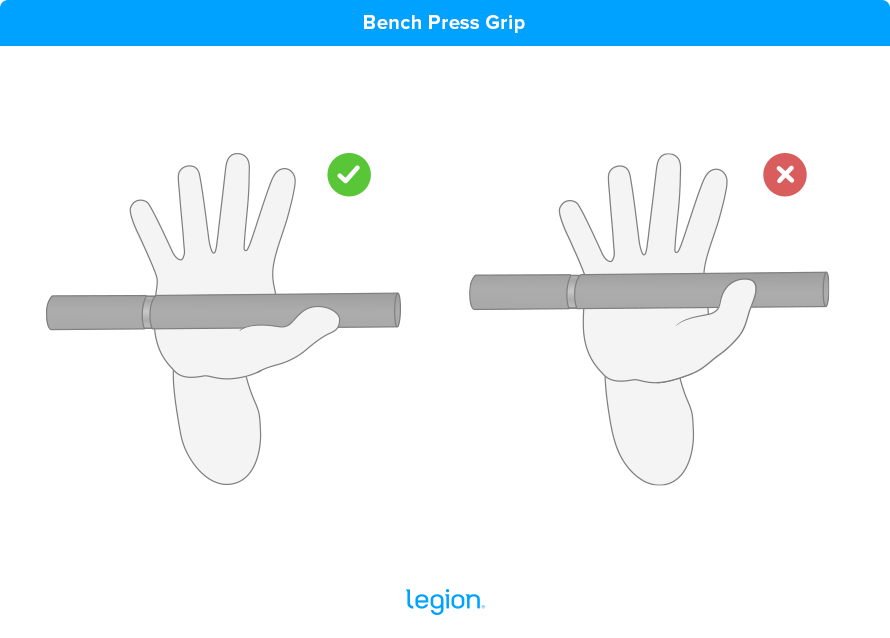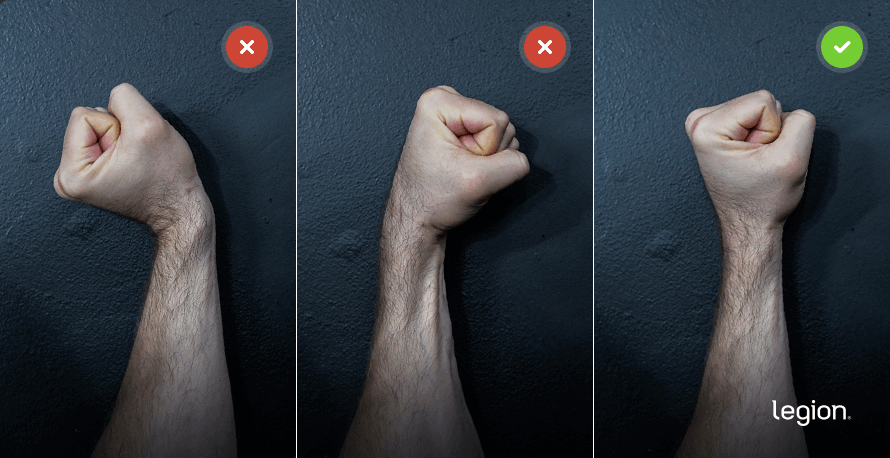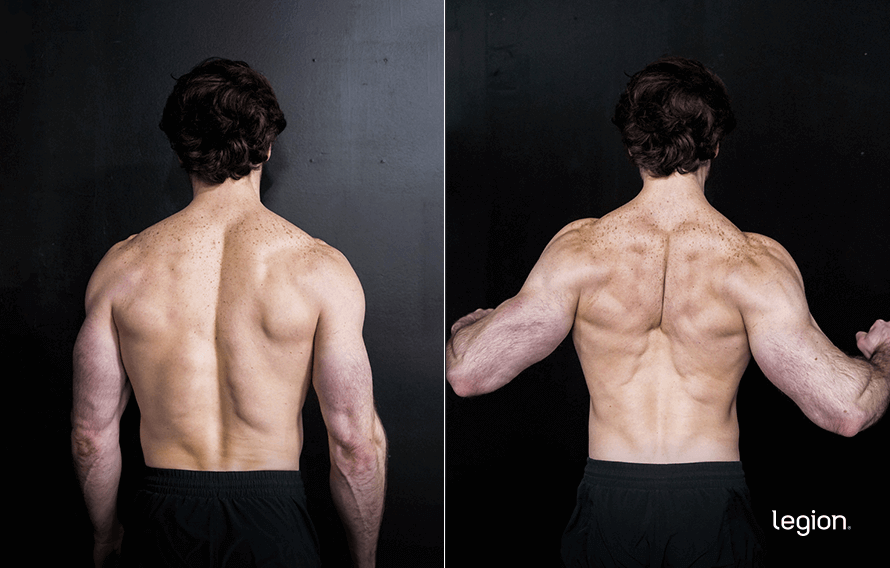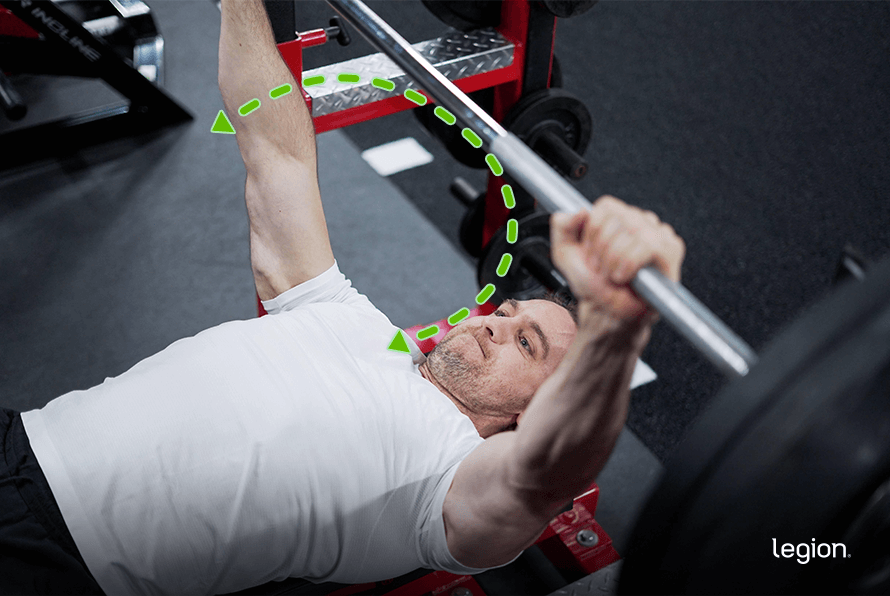Use this 5-point bench press setup checklist to get into the perfect position to bench heavy weights:
1. Rack Height
Rack the bar so it rests around two inches below wrist height when you’re lying on the bench with your arms extended in front of you. If you have to reach for the bar, it’s too high; if you have to perform a half-rep to lift it off the hooks, it’s too low.
2. Body Position
Lie on the bench with your eyes directly under the bar. If you lie too close to the top of the bench, you risk hitting the hooks mid-set, which can muddle your form and throw off your balance. Lie too far down the bench, and you’ll have to pull the bar further out of the rack to get it into position, which saps your strength and can hurt your performance.
RELATED: Why Do People Arch Their Back When Bench Pressing?
3. Grip
Grip width varies depending on your build, but most people do best with their hands about 18-to-28 inches apart. A good starting point for guys is to rest your pinky or ring finger on the rings in the barbell’s knurling, then widen or narrow your grip based on how it feels. Women often feel more comfortable gripping 2-to-4 inches inside the rings.
Nestle the bar toward the base of your palms, not near your fingers—this ensures your forearms bones help support the weight.

Wrap your fingers and thumbs around the bar, and grip it as hard as you can. Allow your wrists to bend back slightly, but avoid letting them fold too far, as this can “leak” force and limit your pressing power.

4. Shoulders, Back, and Leg Setup
Plant your feet on the floor, shoulder-width apart and directly under your knees, and engage your quads and glutes. Arch your back by pushing your chest toward the bar while keeping your shoulders and butt on the bench. Then, pull your shoulder blades together and down, like you’re “putting them in your back pockets”:

RELATED: How to Use Leg Drive in the Bench Press to Build More Muscle
5. Unracking
Unrack the bar by straightening your elbows, then pull the bar over your chest. A useful cue is to imagine bending the bar into an inverted U shape as you move it into position. This engages your lats to stabilize the weight:

RELATED: Shoulder Pain from Bench Press: Causes, Fixes & Prevention
How to Set Up for the Bench Press: Key Takeaways
A solid bench setup is essential for lifting heavy weights safely and efficiently. Luckily, you only need to focus on these five steps:
- Set your rack height
- Position your body on the bench
- Grip the barbell
- Set your shoulders, back, and legs
- Unrack the barbell
Follow this simple bench set up guide before every set, and you’ll be pressing more weight, more safely, than ever.
Supplements to Maximize Your Bench Press Results
Setting up correctly for the bench press is a good start, but if you want even better results consider these three supplements:
- Protein powder: Protein powder, such as Whey+ (Legion’s whey isolate) or Casein+ (Legion’s micellar casein), provides your body with the nutrients needed to build muscle tissue and recover from workouts.
- Creatine: Creatine boosts muscle and strength gain, improves anaerobic endurance, and reduces muscle damage and soreness from your workouts. For a natural source of creatine, try Legion’s creatine monohydrate, creatine gummies, or post-workout Recharge.
- Pre-workout: A high-quality pre-workout enhances energy, mood, and focus, increases strength and endurance, and reduces fatigue. For a top-tier pre-workout containing clinically effective doses of 6 science-backed ingredients, try Legion’s Pulse with caffeine or without.
(If you’d like even more specific advice about which supplements you should take to reach your health and fitness goals, take the Legion Supplement Finder Quiz, and in less than a minute, you’ll know exactly what supplements are right for you.)










